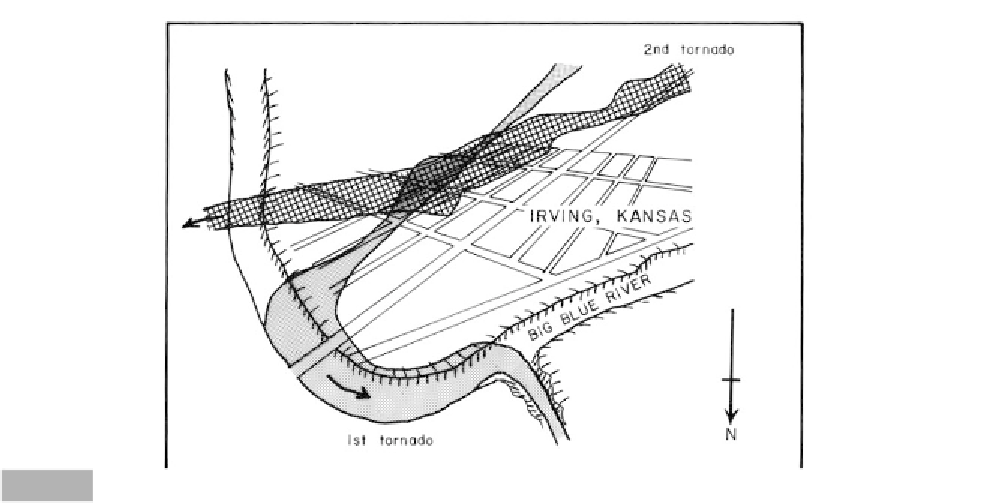Geoscience Reference
In-Depth Information
Emergency Management Agency (FEMA). In rural
areas, community response to a tornado disaster is
automatic and there are government agencies, in
addition to police and fire services, which have been
specially created for disaster relief. Generally, however,
tornadoes are accepted as a risk that must be lived
with. The above observations are not universal; they
may be modified by the cultural attitudes of people
living in various threatened areas. Sims and Baumann
(1972) analyzed the attitudes of people to the tornado
risk between Illinois and Alabama. The death rate from
tornadoes apparently was higher in the latter state.
They concluded, based upon interviews, that there was
a substantial attitude difference between the two
states. People in Illinois believed that they were in
control of their own future, took measures to minimize
the tornado threat, and participated in community
efforts to help those who became victims. In Alabama,
however, people did not heed tornado warnings, took
few precautions, were more likely to believe that God
controlled their lives, and were less sympathetic
towards victims. Oliver (1981) has analyzed this study
and pointed out some of its fallacies. For instance, the
death toll from tornadoes is higher in Alabama because
the tornadoes there are more massive than in Illinois.
However, the Sims and Baumann (1972) study does
highlight the fact that not all people in the United
States have the same perception of the tornado
hazard or response to dealing with its aftermath. These
differences will be elaborated further in Chapter 13.
Your attitude to tornadoes may make little differ-
ence to your survival; rather, where you live in the
Midwest dictates your chances of survival. Inadver-
tently, Europeans settling the Midwest may have
chosen the most susceptible town sites. For example,
Oklahoma City on the Canadian River has been struck
by more than 25 tornadoes since 1895, even though the
State of Oklahoma ranks seventh in the United States
for deaths per unit area due to tornadoes - 7.3 deaths
per 10 000 km
2
compared to 20.5 per 10 000 km
2
for
Mississippi, which ranks first. Indian tribes in the
Midwest rarely camped in low-lying areas such as
the bottoms of ravines, or along river courses, because
they were aware that tornadoes tend to move towards
the lowest elevation once they touch ground. This
makes sense since the tornado vortex is free-moving
and will tend to follow the path of least resistance.
Figure 4.14 dramatically illustrates this tendency. The
first tornado to pass through Irving, Kansas, on 30 May
1879, ended up being trapped in the valley of the Big
Blue River, and eventually in a small gully off to the
side. Tornadoes do not always adhere to this pattern, as
illustrated in the same figure by the path of the second
tornado that came through the town minutes later. For
historical reasons such as access to transport and water,
many towns in the United States Midwest are built
near rivers or in low-lying areas. The fact that
tornadoes tend to travel along these paths may be one
of the reasons why they have been, and will continue to
be, a major hazard in the United States Midwest.
2nd tornado
Irving, Kansas
1st tornado
N
The effect of topography on the passage of a tornado at Irving, Kansas, 30 May 1879 (after Finley, 1881).
Fig. 4.14
































